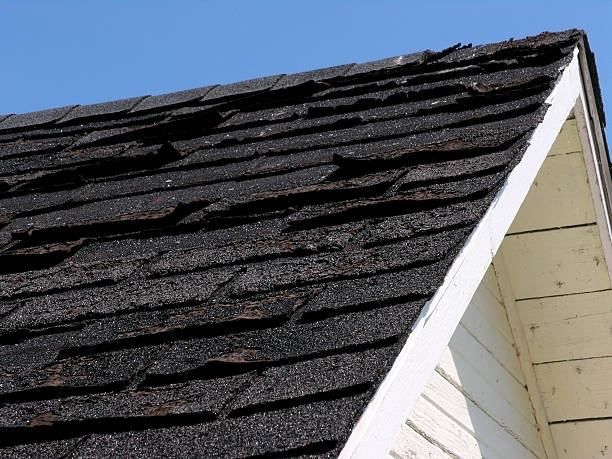Summers in Orange County can be a relentless blaze, with temperatures soaring and the sun beating down like a fiery hammer, especially in your home’s upper floors. Even with the air conditioner running at full blast, your home can be unbearably hot in places. Despite your best efforts to keep your home cool, nothing seems to work, and your energy bills keep skyrocketing. If this battle sounds familiar, your attic may lack proper ventilation, causing heat to build up and trap warm air. Poor ventilation won’t just make your home uncomfortable; it will ultimately put an unnecessary strain on your HVAC system and increase your energy costs. Unfortunately, the problems don’t stop there.
How Does the Attic Keep My Home Healthy?
Attic ventilation is vital in maintaining your home’s overall health and efficiency. It allows fresh air to circulate through intake vents while pushing out hot, stagnant air through exhaust vents. Without maintaining this air flow, homes in Orange County can suffer from moisture buildup, mold growth, premature roof deterioration, and poor heat management. Then, come winter, the issue shifts. Without proper air flow, winter will bring condensation buildup inside the attic, causing mold growth, wood rot, and even damaging insulation. Though it is not usually a problem in Orange County, poor ventilation can also lead to ice dams inside the roof structure, leading to costly repairs.
A well-ventilated attic offers several key benefits:
A well-ventilated attic prevents moisture-related problems by keeping your roofing structure dry and free from mold and mildew.
Proper attic ventilation improves energy efficiency by reducing the heat trapped within your roof, allowing you to maintain comfortable indoor temperatures without putting unnecessary strain on your HVAC system.
Proper ventilation extends your roof’s lifespan by minimizing temperature fluctuations that can cause shingles to warp or deteriorate too soon.
A balanced attic temperature ensures your home remains more comfortable year-round. A well-ventilated roof prevents hot spots in the summer and reduces excess humidity in colder months, creating a more pleasant living environment without constant thermostat adjustments.
A well-ventilated attic can provide extra utility space for storage or can be customized into a room.
How Much Ventilation Does My Attic Need?
The International Residential Code (IRC) stipulates that the minimum net free area (NFA) for attic ventilation should be 1 square foot of ventilation for every 150 square feet of attic space. This translates to 1:300 if a vapor barrier is installed to ensure proper airflow and prevent moisture buildup. In addition to ventilation, the amount of insulation needed in the attic depends on climate zone requirements. For example, Orange County, California, belongs to Zone 4, which has a recommended R-value for attic insulation of R-38 and R-60.
Some of the best roofing contractors, such as Rescue Roofer, can install various ventilation systems during repairs or new home builds. Their solutions include ridge vents, soffit vents, gable vents, powered attic ventilators, and solar-powered vents. Each vent is designed to satisfy specific design requirements fit for most Orange County homes.
How Can I Detect Warning Signs of Poor Attic Ventilation?

As mentioned at the start of the article, your attic feeling like an unyielding furnace is just one of the signs of poor attic ventilation. Other often-overlooked warning signs of poor attic ventilation include:
Musty Odors: A persistent musty smell could be caused by trapped moisture. Humid air lingers without proper ventilation, creating ideal conditions for mold and mildew to thrive, causing this odor.
Peeling Paint: Excess humidity can cause interior and exterior paint to peel or blister. This is especially common near the roofline and ceilings, where trapped moisture from a poorly ventilated attic seeps into the walls.
Unexplained Increases in Energy Bills: Excess heat can strain your air conditioning system, making it harder to maintain your room’s temperature. This leads to higher energy consumption and unnecessary spikes in your utility bills.
Warped or Deteriorated Shingles: Excessive heat will cause your roof shingles to curl, crack, and wear out faster than expected.
Decking Discoloration: Like shingles, poor heat management beneath your roof deck will show signs of discoloration.
Termite or Animal Infestation: Gaps and moisture buildup create an inviting environment for pests seeking shelter in your attic.
Are There Other Things I Should Watch Out For if I Have an Improperly Ventilated Attic?
Yes! In addition to raising your energy bills and compromising your roof’s structure and shingles, improper attic ventilation can also risk your material warranties. Many roofing manufacturers require proper attic ventilation as a condition for their warranties. These manufacturers may deny warranty claims if heat and moisture buildup cause roofing damage, such as premature shingle deterioration.
Even worse, if overlooked, moisture trapped inside your attic can compromise your home’s structural integrity over time. Rotting wood beams, weakened insulation, and mold growth can lead to severe damage that affects your home's entire framework, not just your attic. Once the onset of wood rot becomes severe, it will require extensive renovation work and significantly reduce your home’s value.
What Should I Do if I Detect Signs of Improper Attic Ventilation?
If you’ve noticed signs of poor attic ventilation, such as musty odors, peeling paint, unexplained spikes in energy bills, or even pest infestations, it is crucial to take immediate action before the problem worsens. One of the first steps in addressing poor attic ventilation is to schedule a professional roof inspection. A trained and experienced roofing contractor, such as Rescue Roofer, can assess your attic’s airflow, check for blocked vents, and recommend the best solutions to restore proper ventilation, regardless of your home’s design. Depending on your home’s structure and climate, solutions may include ridge vents, soffit vents, gable vents, or powered attic ventilators for aggressive solutions, especially for larger homes.
Additionally, your attic insulation should meet the International Residential Code (IRC) standards to maintain energy efficiency. In Orange County, attic insulation should satisfy the required R-value to satisfy the requirements of the area’s climate.
For Proper Attic Ventilation in Orange County: Call Rescue Roofer!

If you’re dealing with any of these signs, don’t wait until costly damage occurs. Contact Rescue Roofer at (888) 477-2230 to schedule an attic ventilation assessment and ensure your home remains energy-efficient, comfortable, and protected year-round.

